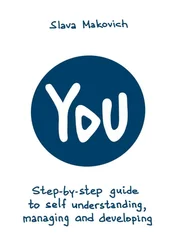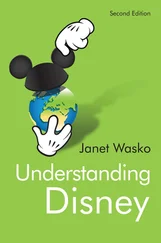Consider this quote from an asexual person: “Outside of AVEN or conversations specifically about sexuality, I don’t really consciously think of myself as asexual. Like being an atheist or non-Hispanic or a non-driver (all apply), asexuality is something I’m not and never was, rather than something I am. The label is mostly a useful marker. So, my asexual identity is important in certain contexts, and I can’t imagine my life if I weren’t asexual, but it is not specifically important to me” (Scherrer, 2008, p. 630).
The famous psychologist George Kelly and his personal construct theory are relevant to the two points made above. According to Kelly (1955), the way we see the world, other people, and ourselves is based on our personal constructs. We are construct “constructors.” These constructs (or ideas about the way things work) almost always are perceived to have extreme points. Thus, we tend to think about people as occupying an extreme of say, a “happy-sad” dimension: Sally is happy; Frank is sad . Thus, the happy-sad construct is defined for us in large part by its extremes. It is not surprising, then, that sexual minorities use extremes, or contrasts, of sexuality (e.g., hetero-homo) to define themselves as people, or that heterosexual people would use these extremes/contrasts in defining sexual minorities. But it is also true that some constructs are just not as relevant for people as other constructs. So, if sexuality is completely removed from one’s life (and one barely gives it a second thought), it may not be a personally relevant construct in defining oneself, or in forging one’s identity. Some asexual people, then, may have little to no incentive to form an asexual identity and come out, or at least no incentive to make public displays of their nonsexuality.
Consider an example to illustrate this point further: Do non-golfers— a golfers?—go to golf courses and march on the eighteenth green to assert their non-golfing identity? It would be rather strange, of course, for non-golfers to do so, because golfing, as an activity and as a construct, is not personally relevant to most of them, nor is it part of their identity. Thus, as a golfer, as I am finishing up my round and heading to the clubhouse, I rarely see such displays and marches from non-golfers. [27] As mentioned, I have a thing for golf; thus, golfing examples clearly have a special resonance for me.
From the above, it may seem like there are only modest reasons for asexual people to forge and fiercely defend a sexual identity. But we must not discount the importance of the other identity-relevant forces in asexual people’s lives, such as general identity needs, not wanting to be alone and isolated, and perceiving oneself on the extreme end of an often very salient construct in society—sexuality. Moreover, there is another reason why forging an identity, developing an asexual culture, and becoming part of a cohesive group is of importance to asexual people: to defend their lives against modern medicalization and the perception that they have a disorder or are unhappy.
But before we address the issue of medicalization, let’s consider a little background. Asexuality, broadly defined, has often not been viewed across cultures and historically as a disorder or an illness. In fact, from a religious perspective, asexuality (or at least abstinence) has often been viewed as a virtue. For example, most religions across the world proscribe liberal sexuality, and some (e.g., Buddhism, Roman Catholicism) still view abstinence as a virtue. Moreover, non-religiously based institutions, including the Western medical establishment, historically would not likely have labeled asexuality a disorder, particularly in women. In the 1950s and 1960s, this started to change. Sexuality became decoupled from reproduction, and sex was viewed on its own merits; that is, as a source of physical pleasure, recreation, and so forth (Sigusch, 1998).
Given this decoupling of sex from reproduction, it is perhaps understandable that the absence of sexuality started to be seen as a potential problem and eventually found its way into important medical texts and manuals, like the Diagnostic and Statistical Manual of Mental Disorders ( DSM-III ) (American Psychiatric Association, 1980). (Most North American clinicians diagnose mental health problems based on criteria found in the DSM .) For example, “inhibited sexual desire,” a name later changed to “hypoactive sexual desire disorder,” first appeared in this manual in 1980. About ten years later, “lack or loss of sexual desire” first appeared in another important medical manual, the International Statistical Classification of Diseases and Related Health Problems ( ICD-10 ) (World Health Organization, 1992). Some social critics, particularly feminists, have also argued that the medicalization of many aspects of sexuality, including asexuality—again, broadly defined—has occurred because there are profits to be had from creating disorders where, arguably, none existed before (Drew, 2003; Fishman, 2004; Fishman, 2007; Tiefer, 2002).
In the wake of this medicalization of asexuality, the modern asexuality movement began. David Jay, the founding member of the most popular asexuality website, AVEN, has explained at various times why he began the site. His reasons seem to reflect a number of the identity issues mentioned above. For example, one reason was personal: “He was driven by memories of feeling alone. As a teenager in St. Louis, he searched the Web for asexual and found only research on amoebas” (Bulwa, 2009, August 24). Another reason was educational—to help other asexual people understand more about themselves (Bulwa, 2009, August 24). Indeed, there are various stories of asexual people “discovering themselves” through AVEN. For example, one young woman recalls that AVEN “described her so accurately… that she cried over her keyboard” (Bulwa, 2009, August 24).
It is also clear that, over time, Jay wanted to build a community that would enable asexual people to change the way the world (especially the medical world) views them. Thus, this last reason for developing AVEN is in line with (public) identities being a means of social and political change. He has said, “When I was younger, the message I would always hear is that you need sex to be happy” (Childs, 2009, January 16). He has also said, “We need to know we’re not broken” (Bulwa, 2009, August 24), and “We need to have more discussion about how people can not have sex and still be happy” (Childs, 2009, January 16). This last reason for founding and expanding AVEN has led to an active movement to do just that: Some AVEN members have become a vocal group lobbying to change the way the latest DSM edition labels asexual people, particularly if they are not distressed about their lack of sexual interest/attraction. One media report stated this directly: “AVEN members have one concrete goal: changing the authoritative Diagnostic and Statistical Manual of Mental Disorders to make explicit that asexuality is not a hypoactive sexual desire disorder” (Bulwa, 2009, August 24). However, such change begins with, or at least is facilitated by, a cohesive group rallying around a relevant identity or common label. After all, having an identity as an “asexual” person has its benefits, both personally and politically. In the recent scientific and clinical literature, the words most widely used to describe asexual people have intimated, if not actively embraced, the language of illness and disease (e.g., “hypoactive sexual desire disorder”). In contrast, the word “asexual” is merely descriptive of the phenomenon and not laden with values; it does not imply that a specific level of sexual interest or attraction is correct and healthy. Thus, people who embrace the identity of an “asexual” are likely more positive about their self-image than those who are asexual but do not identify as such, and particularly relative to those who use medical or clinical language to describe themselves. People who embrace an identity as “asexual” are also, I expect, more likely to form a cohesive political group than those who do not identify as such and/or those who choose more medical or clinical language to describe themselves. Embracing an asexual identity also, in turn, potentially enables asexual people to change the medical establishment, or at least its rules for what is and what is not a mental illness. And they may succeed in doing so.
Читать дальше












